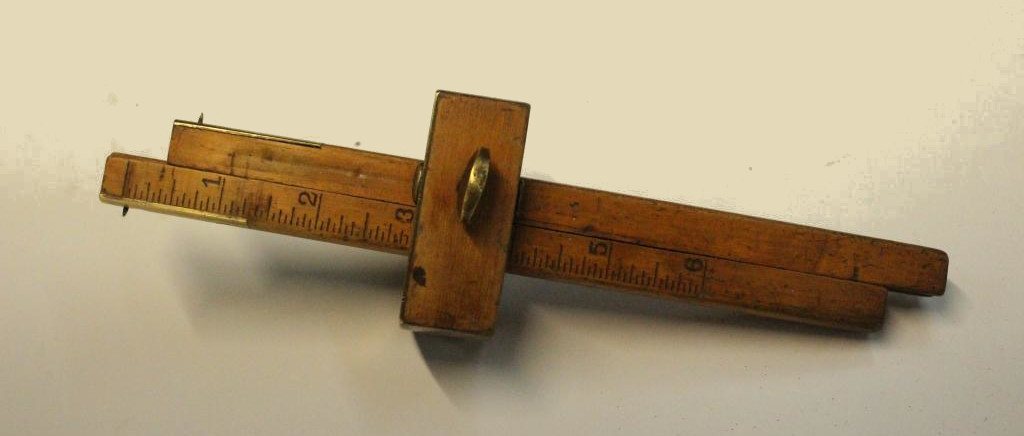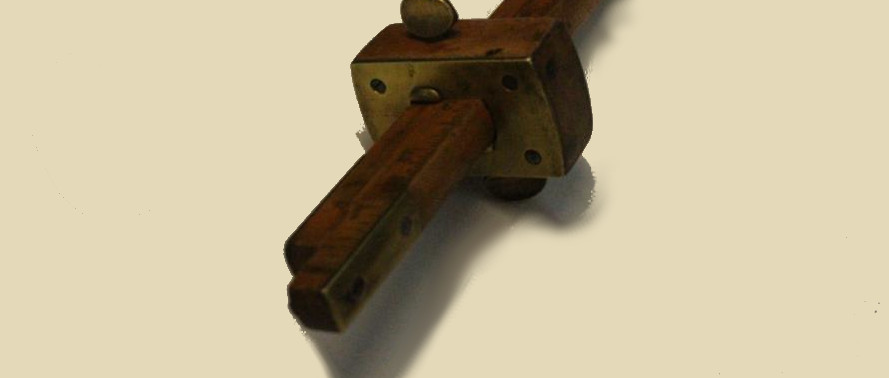Day 9, A double beam marking gauge...


Today's nifty McGuffin from my garage is another garage sale acquisition: a dual beam marking gauge. Marking gauges are used for layout in traditional woodworking. The traditional design has a head (or fence) which rides along the end of a board, a stem carries a pointed metal spur or point, and some means of locking the stem in place. This enables the woodworker to inscribe a line at a fixed distance from one edge of the board. It is used in a variety of ways, but two common uses are in prepping boards and laying out mortises, rabbets, or tenons.
In board prep, you might take a rough piece of lumber, and then plane one side until it is flat using a sequence of hand planes. Then, you set the gauge distance for the thickness of board you want, and measuring from the flat side, inscribe a line at the desired thickness. You can then plane down to that line to create a board. Now we have power tools like jointers and planers to accomplish the same much faster.
You might also use this to layout mortises, which are slots or holes which are cut into wood for traditional mortise and tenon joinery. There are typically cut with chisels, and there are special gauges that are well adapted to marking both sides of a mortise at once.
This particular marking gauge is a dual beam marking gauge. Suppose that you are working on a piece where you are doing your board preparation, and you have two different thicknesses of board that you need to prep. You might switch between two different marking gauges, each set to the desired thickness. This marking gauge combines two for one: the beam is split into two different pieces, each of which can be set independently. You just flip it over to mark the alternate setting.
This particular example does not bear a maker's mark, so I am not sure of the manufacturer. I would
guess that the wood is beech, and it has a lot of brass, including a completely brass wear plate on the
face and brass wear plates near the tip of each beam. I am tempted
to identify it as a Stanley No. 71. Usually Stanley was pretty good about stamping their stuff, but I have
heard of examples that were not stamped.
Unlike the linked example, this has a head which is faced with brass, as are the tips of the beam which
probably means this was a higher end product. Most of the Stanley double beams that I have observed
have a
face which just has a pair of strips of brass,
whereas this one has its entire face covered in
brass though, so I am not 100% sure of its identity. Stanley manufactured these over a long period, so it is
hard to pin down a date, but it is at least eighty and probably around one hundred years old.
I did little more than clean and wax this example. The action of it shows some sign of wear, and it is not the smoothest moving example of a marking gauge. I have ones that I like better for work, but this one remains a very attractive example, and could be put to use today.
Hope you enjoyed today's installment of #mygaragegems.